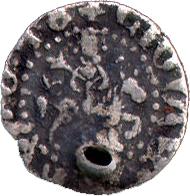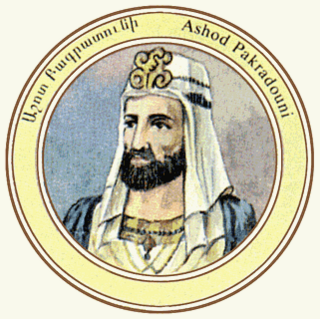Armenians in exile: The Armenian Kingdom of Cilicia
The Armenian Kingdom of Cilicia was a state formed in the Middle Ages by Armenian refugees, who were fleeing the Seljuk invasion of Armenia. [2] It was initially founded by the Rubenian dynasty, an offshoot of the larger Bagratid family that at various times held the thrones of Armenia and Georgia. While the Rubenian rulers were initially regional princes, their close ties with the Western world after the First Crusade saw the principality recognised as a kingdom under Leo I by the Holy Roman Empire in 1198. [3] The Rubenid dynasty fell in 1252 after the death of the last Rubenid monarch Isabella, and her husband Hethum I became sole ruler, beginning the Hethumid dynasty. After the death of Leo IV in 1341 his cousin was elected to succeed him as Constantine II, the first king of the Lusignan dynasty. The kingdom fell at the beginning of Leo V's reign to the Mamluks, [4] and henceforth title holders were only claimants to the throne. Charlotte of Cyprus ceded the throne to the House of Savoy in 1485, [5] and the title fell out of use until after 1861.
Lords and Princes of Cilician Armenia Kings of Cilician Armenia
Rubenian dynasty
| Name | Portrait | Born | Reign | Marriage (s) | Death | Notes |
|---|---|---|---|---|---|---|
| Ruben I (Ռուբեն Ա) | 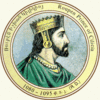 | 1025 [6] or 1035 [7] Unknown | 1080–1095 | Unknown two children | 1095 Kormogolo [8] or 1035 aged 59–60 or 69–70 | He declared the independence of Cilicia from the Byzantine Empire, thus formally founding the beginning of Armenian rule there. [9] The Roupenian dynasty ruled Cilician Armenia until 1219. |
| Constantine I (Կոստանդին Ա) |  | Between 1035–1040 [10] or between 1050–1055 Son of Ruben I | 1095-1100/1102/1103 | Unknown (great-granddaughter of Bardas Phokas) three children | c.1100 [11] or 24 February 1102 or 23 February 1103 [7] aged approximately 50–60 | He provided ample provisions to the Crusaders, for example during the difficult period of the siege of Antioch in the winter of 1097. He was a passionate adherent of the separated Armenian Church. |
| Thoros I (Թորոս Ա) | Unknown, before 1100 First son of Constantine I | 1100/1102/1103-1129 | Unknown (great-granddaughter of Bardas Phokas) three children | c.1129 [12] or 17 February 1129 or 16 February 1130 [7] | His alliance with the leaders of the First Crusade helped him rule his feudal holdings with commanding authority. He avenged the death of King Gagik II by killing his assassins. He also bestowed favors and gave gifts and money to many monasteries for their decoration and adornment. | |
| Constantine II (Կոստանդին Բ) | Unknown, before 1129 Son of Thoros I | 1129/1130 | Unmarried | After 17 February 1129 | He died a few months after his father's death in the course of a palace intrigue. | |
| Leo I (Լեիոն Ա) | 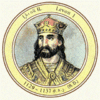 | Unknown, before 1100 Second son of Constantine I | 1129/1130-1137 | Unknown six or seven children | 14 February 1140 Constantinople aged at least 39–40 | Most of his successes benefited from Byzantium's pre-occupation with the threats of Zengi from Aleppo and the lack of effective Frankish rule, especially in the Principality of Antioch. He expanded his rule over the Cilician plains and even to the Mediterranean shores. He was taken captive in 1137 with two of his sons by the Byzantine Emperor. He died in prison. |
| Byzantine Rule : 1137-1144/1145 | ||||||
| Thoros II the Great (Թորոս Բ) | 1144 [7] or 1145 [13] [14] Son of Leo I | 1144–1169 | Unknown (An unnamed daughter of Simon of Raban [15] [14] ) or Isabelle of Edessa [7] 1149 two children Unknown (An unnamed daughter of Thomas of Cilicia) 1164 one child | 6 February 1169 [16] [17] [7] aged 23–24-25 | Thoros survived his incarceration in Constantinople and was able to escape in 1143. He found it occupied by many Greek garrisons, ousting successfully the Byzantine garrisons. | |
| Thomas of Cilicia (Թոմաս) | Unknown Son of a daughter of Leo I | 1169–1170 | Unknown at least one child | 1170 aged 4–5 | Grandson of Leo I, was regent on behalf of his own grandson, Ruben II. Assassinated by prince Mleh, who took the power to himself. | |
| Ruben II (Ռուբեն Բ) | 1165 Son of Thoros II | 1169–1170 | Unmarried | 1170 aged 4–5 | Placed under regency of his maternal grandfather, Thomas of Cilicia. Died as a minor, assassinated by his uncle Mleh. | |
| Mleh (Մլեհ) | Before 1120 Son of Leo I | 1170–1175 | Unknown no children | 15 May 1175 Sis aged at least 54–55 | During his father's captivity escaped to Edessa with two of his brothers. Expelled from Cilicia by Thoros II, for embracing the Muslim faith, almost undid his brother's work when he took the power. | |
| Ruben III (Ռուբեն Գ) | 1145 First son of Stephen of Armenia and Rita of Barbaron | 1175–1187 | Isabella of Toron two children | 6 May 1187 [7] Drazark [18] aged 41–42 | He was a friend of the Franks (the Crusaders); for example, at the end of 1177, assisted Philip, Count of Flanders and Prince Bohemond III of Antioch at the ineffectual siege of Harenc. [17] | |
| Leo II the Magnificent (Լեւոն Ա Մեծագործ) | 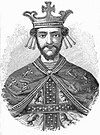 | 1150 Second son of Stephen of Armenia and Rita of Barbaron | 1187-1198/1199 | Isabella of Antioch 3 February 1188 or 4 February 1189 (annulled 1206) one child Sibylla of Cyprus 28 January 1210 or 27 January 1211 one child | 2 May 1219 [7] aged 68–69 | In 1194–1195, when he was planning to receive the title of king, he instituted a union of the Armenian church with Rome. |
| Leo II the Magnificent (Լեւոն Ա Մեծագործ) (LeoIas king) |  | 1150 Second son of Stephen of Armenia and Rita of Barbaron | 1198/1199 – 1219 | Isabella of Antioch 3 February 1188 or 4 February 1189 (annulled 1206) one child Sibylla of Cyprus 28 January 1210 or 27 January 1211 one child | 2 May 1219 [7] aged 68–69 | During his reign, succeeded in establishing Cilician Armenia as a powerful and a unified Christian state with a pre-eminence in political affairs. [19] Led his kingdom alongside the armies of the Third Crusade and aided the crusaders. Under his rule, Armenian power in Cilicia was at its apogee: his kingdom extended from Isauria to the Amanus Mountains. |
| Adam of Baghras | Unknown | 1219–1220 | Unknown | 1220 | Named regent for Isabella I. Assassinated by courtiers. | |
| Constantine of Barbaron (Կոնստանդին Գունդստաբլ) | Unknown Son of Vassag of Barbaron | 1220–1226 | Alice Pahlavouni before 1263 six children | 1263 | Named regent for Isabella I. Married the heiress to his eldest son. | |
| Isabella I (Զապել) (jointly with Hethum I ) | 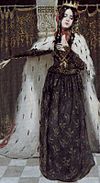 | 27 January 1216 or 25 January 1217 Daughter of Leo II the Magnificent and Sibylla of Cyprus | 1226–1252 | Philip of Antioch June 1222 no children Hethum I 14 June 1226 Tarsus seven children | 23 January 1252 aged 35–36-37 | A period of dynastic conflict that ended with the apparent unification in marriage of the two principal dynastic forces of Cilicia (i.e., the Roupenids and the Hethumids). The country experienced struggles and shifting alliances between Crusader states and the Mongol Empire. |
Hethumid dynasty
| Name | Portrait | Born | Reign | Marriage (s) | Death | Notes |
|---|---|---|---|---|---|---|
| Hethum I (Հեթում Ա) (jointly with Isabella I ) |  | 1215 Son of Constantine of Barbaron and Alice Pahlavouni | 1226–1270 | Isabella I 14 June 1226 Tarsus seven children | 21 October 1270 aged 54–55 | Was a major player in the political struggles and shifting alliances around the Crusader states, as the Armenians had ties with all sides. They were primarily aligned with the Europeans, but during Hethum's reign, the rapidly expanding Mongol Empire became a concern. |
| Leo III (Լեւոն Բ) (LeoIIas king) | 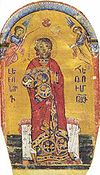 | 1236 Son of Hethum I and Isabella I | 1270–1289 | Anna of Lampron 5 January 1262 or 14 January 1263 sixteen children | 6 February 1289 aged 52–53 | A pious king, he was devoted to Christianity. He pursued active commercial relations with the West, by renewing trade agreements with the Italians and establishing new ones with the Catalans. He also endeavoured to reinforce the Mongol alliance. |
| Hethum II (Հեթում Բ) |  | 1266 First son of Leo III and Anna of Lampron | 1289–1293 1295–1296 (as co-ruler) 1299–1303 | Unmarried | 17 November 1307 Anazarba aged 40–41 | Political trouble: he abdicated in 1293 for monastic vows, being recalled by his brother Thoros III in 1295. They travelled to Constantinople to marry their sister Rita to Michael IX Palaiologos, but their brother SempadI usurped the throne, and they were imprisoned in the return; Freed after Sempad's death, assumed power again in 1299, abdicating once more in 1303 to become regent for his successor, Leo IV. |
| Thoros III (Թորոս Երրորդ) (ThorosIas king) |  | 1271 Second son of Leo III and Anna of Lampron | 1293–1298 (nominally since 1296, imprisoned) | Margaret of Cyprus 9 January 1288 two children Unknown (daughter of Mahmud Ghazan Khan) no children | 23 July 1298 aged 26–27 | Imprisoned in 1296 by Sempad, his brother, who usurped the throne, was strangled in prison in 1298. |
| Sempad (Սմբատ) | 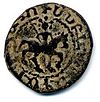 | 1277 Third son of Leo III and Anna of Lampron | 1296–1298 (usurper) | Unknown (daughter of Mahmud Ghazan Khan) no children | 1310 aged 32–33 | Sempad seized the throne with the aid of his brother Constantine while his brothers Hethum II and Thoros were in Constantinople. At their return, imprisoned them. He also blinded Hethum and strangled Thoros. |
| Constantine III (Կոստանդին Ա) (ConstantineIas king) |  | 1278 Fourth son of Leo III and Anna of Lampron | 1298–1299 | Unmarried | 1310 aged 31–32 | After helping and then deposing his brother, he was raised as king. Gave the throne to his brother, Hethum II. |
| Hethum of Armenia (Հեթում Բ) |  | 1266 First son of Leo III and Anna of Lampron | 1303–1305 | Unmarried | 17 November 1307 Anazarba aged 40–41 | Re-installed as regent for his nephew, Leo IV. |
| Leo IV (Լեիոն Գ) (LeoIIIas king) | 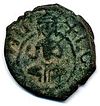 | 1289 Son of Thoros III and Margaret of Cyprus | 1305–1307 | Agnes of Tyre-Cyprus 1305 no children | 17 November 1307 Anazarba aged 17–18 | Together with his uncle, he fought the Mongols, but were both assassinated in 1307. |
| Oshin (Օշին) |  | 3 January 1283 Fifth son of Leo III and Anna of Lampron | 1307–1320 | Isabella of Korikos c.1310 one son Isabelle of Cyprus 1310 (annulled c.1316)no children Joan of Taranto February 1316 Tarsus one child | 20 July 1320 aged 37 | Ascended to the throne after the death of his nephew, Leo IV. He was poisoned by his cousin Oshin of Korikos. |
| Oshin of Korikos (Թորոս Բ) | Unknown Son of Leo I | 1320–1329 | Marguerite d'Ibelin before 1320 one child Joan of Taranto 1320 one child | 8 February 1329 Sis | Probably poisoned his cousin to rise as regent. | |
| Leo V (Լեիոն Դ) (LeoIVas king) | 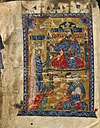 | 1309 Son of Oshin and Isabella of Korikos | 1329–1341 | Alice of Korikos 10 August 1321 one child Constance of Sicily 29 December 1331 no children | 28 August 1341 aged 31–32 | Leo was strongly pro-Western and favored a union of the Armenian and Roman Churches, which deeply displeased the native barons. Murdered by them, they elected a cousin, from the Cypriot Lusignans. |
House of Lusignan
| Name | Portrait | Born | Reign | Marriage (s) | Death | Notes |
|---|---|---|---|---|---|---|
| Constantine IV (Կոստանդին Բ) (ConstantineIIas king) | 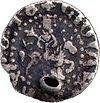 | c.1300 Son of Amalric, Lord of Tyre and Isabella of Armenia | 1341–1344 | Kantakouzene c.1318 Constantinople no children Theodora Syrgiannaina c.1330 two children | 17 April 1344 aged approximately 43–44 | Assassinated in an Armenian revolt in 1344. |
Hethumid-Neghir dynasty
| Name | Portrait | Born | Reign | Marriage (s) | Death | Notes |
|---|---|---|---|---|---|---|
| Constantine V (Կոստանդին Դ) (ConstantineIIIas king) |  | 17 April 1313 Son of Baldwin, Lord of Neghir | 1344–1362 | Marie of Korikos 1340 two children | 21 December 1362 aged approximately 43–44 | During his rule, Armenian Kingdom of Cilicia was reduced by Mamluk raids and conquests. They conquered Ajazzo in 1347, Tarsus and Adana in 1359. |
| Marie of Korikos (Մարիա Կոռիկոսի) | 1321 Daughter of Oshin of Korikos and Joan of Taranto | 1362-c.1365 | Constantine V 1340 two children Constantine VI 1369 no children | Before 1405 Jerusalem aged no more than 84 | Managed the kingdom for three years, before the accession of Constantine VI. | |
| Constantine VI (Կոստանդին Բ) (ConstantineIVas king) |  | c.1324 Son of John, Lord of Neghir | 1365–1373 | Marie of Korikos 1369 no children | April 1373 aged approximately 48–49 | Cousin of his predecessor. Allied with Cyprus, and after 1369, with the sultan of Egypt. The barons disliked his policy because they feared the Muslim annexation, and murdered Constantine. |
House of Lusignan
| Name | Portrait | Born | Reign | Marriage (s) | Death | Notes |
|---|---|---|---|---|---|---|
| Leo VI (Կոստանդին Բ) (LeoVas king) |  | c.1342 Son of John of Poitiers-Lusignan and Soldana of Georgia | 1373–1375 | Margaret of Soissons May 1369 one child | 29 November 1393 Paris aged 50–51 | After several battles against superior Mamluk forces, he locked himself in the fortress at Geben (Armeina: Gaban) and eventually surrendered in 1375, [20] thus putting an end to the Kingdom of Armenia. |
Claimants
| Name | Lifespan | Reign start | Reign end | Notes | Family | Image |
|---|---|---|---|---|---|---|
| Leo VI | 1375 | 1393 | Lusignan |  | ||
| James I | 1396 | 1398 | Lusignan | |||
| Janus | 1398 | 1432 | Lusignan | |||
| John | 1432 | 1458 | Lusignan | |||
| Charlotte | 1458 | 1467 | Lusignan |  |
Potential claimants today
The title passed to the branch of the Lusignans in Constantinople and eventually Russia. [21] The title is contested by the House of Savoy and the House of Brienne via Hugh, Count of Brienne and John of Brienne.
